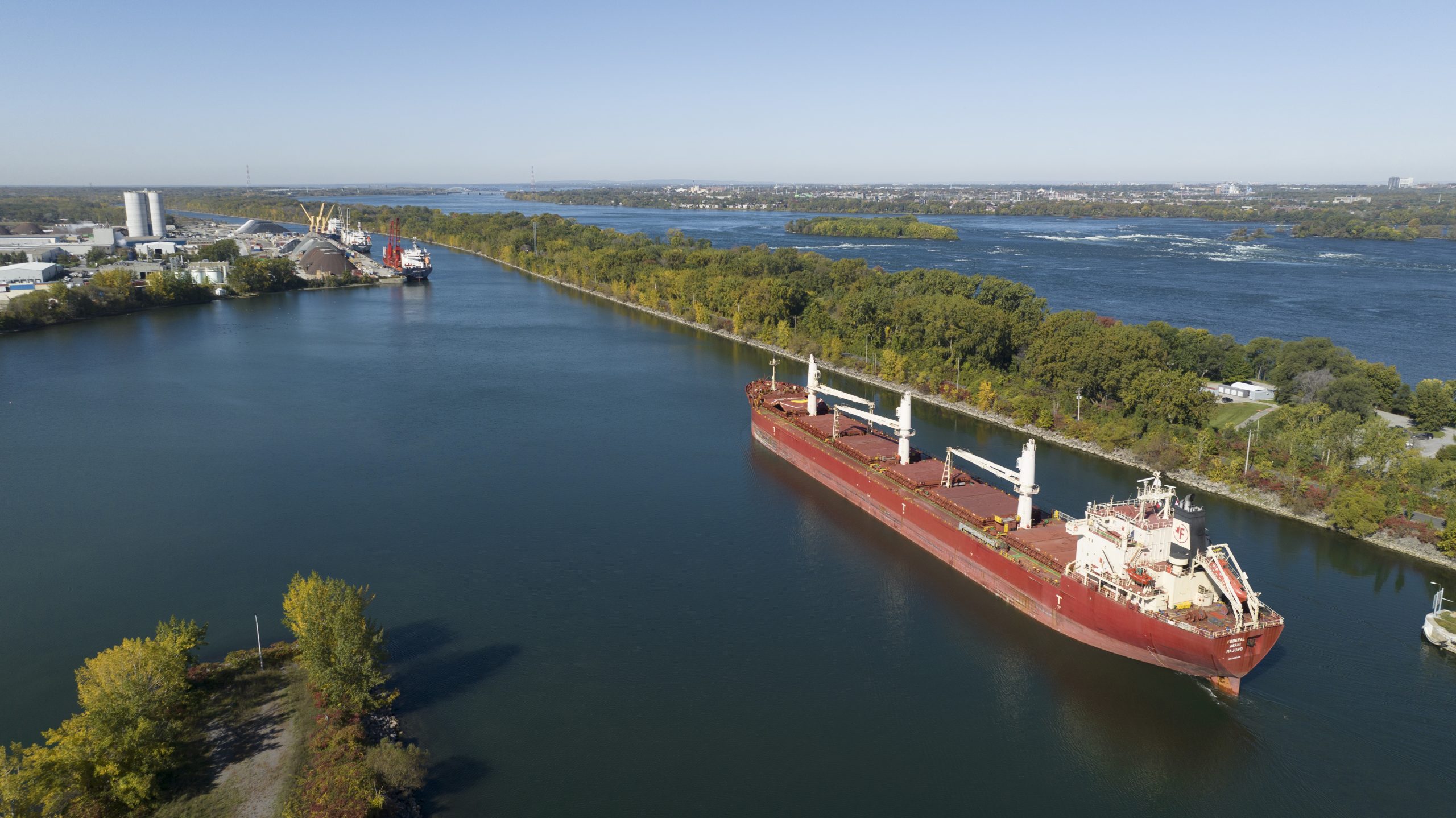The critical role of the Great Lakes-St. Lawrence Seaway system in the global supply chain has been brought into sharp focus over the last few years. Today, the Canadian St. Lawrence Seaway Management Corporation (SLSMC) and U.S. Great Lakes St. Lawrence Seaway Development Corporation (GLS) jointly announced that more than 36 million tonnes of cargo transited the system during the 2022 navigation season.
Final figures show total 2022 cargo attaining 36.3 MT, representing a 5% decline from 2021. All grain was down nearly 7% at 9.9 MT and iron ore down 9.5% at 6.2 MT. Dry and liquid bulk showed growth while general cargo dropped by 21% to 3 MT. Vessel transits advanced slightly to 4,010.
“Seaway traffic results show positive trends amongst certain commodities, which demonstrates our system’s ability to quickly adapt to changes in the market,” said Terence Bowles, President and CEO of the SLSMC. “It’s this agility that enables the Seaway to respond to changes and act on emerging opportunities, such as shifting trade patterns resulting from global events. In addition, we are working closely with partners to develop lands along the Seaway, which will benefit both the economy and local communities.”
“Through decades of investment and reliability, the Great Lakes are uniquely positioned to weather upheavals in the global supply chain,” said Adam Tindall-Schlicht, Administrator of the GLS. “The Seaway System is a leading example of a worldwide economically-resilient and environmentally-sustainable shipping corridor, and optimism is high for expansion of trade on the Great Lakes in 2023.”
2022 Result Highlights
- U.S. and Canadian producers helped mitigate global issues affecting fertilizer supplies, which drove significant growth in potash, up over 100% compared to 2021.
- Dry bulk commodities, including coke, salt and potash, contributed over 11 million tonnes of the 2022 total.
- Petroleum products were up nearly 28% over last year, due to increased passenger travel.
- U.S. grain exports increased, and although month-over-month Canadian grain performed well, it did not match last year’s results. The effects of the 2021 drought in the Canadian prairies impacted export movements at the beginning of the 2022 season. That said, the improved 2022 grain harvest is expected to result in a strong start for 2023.
- An increase of vessel transits, including expanded cruise ship activity in the Great Lakes helped contribute to tourism and economic development in Canada and the United States.
The last commercial transit of the 2022 navigation season through the Montreal-Lake Ontario (MLO) section of the Seaway occurred on January 1st . As for the Welland Canal, it closed on January 9, 2023, marking the conclusion of the fourth year of the Welland Canal season extension pilot program.
From now until the opening of the 2023 season, the SLSMC and GLS will carry out maintenance work on critical lock and maritime assets, ensuring the Seaway system continues to deliver safe and reliable service year after year by managing its assets efficiently. Though there continues to be some uncertainty with regards to economic growth in 2023, the Seaway Corporations will work on key initiatives to further support expanding trade on the Great Lakes. These include facilitating the establishment of green shipping corridors, expanding land development along SLSMC-owned canals, and developing innovative technologies, such as the Vessel Information System.
(Photo SLSMC)





